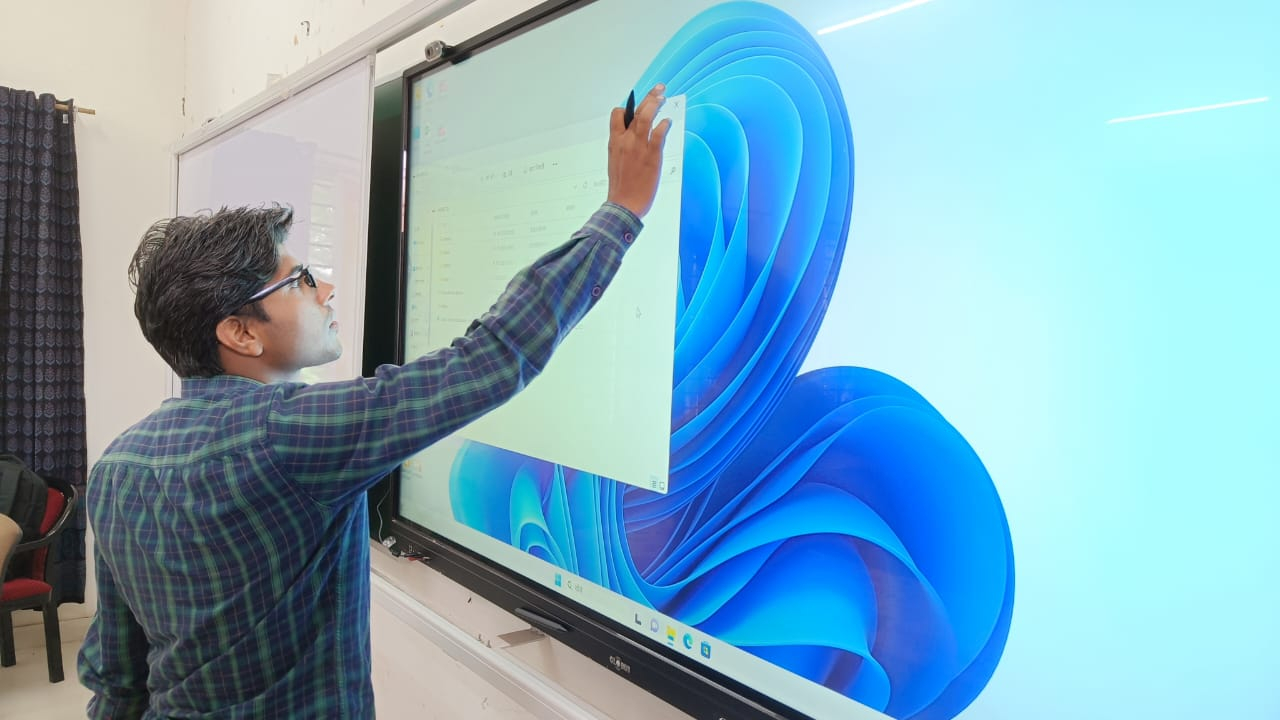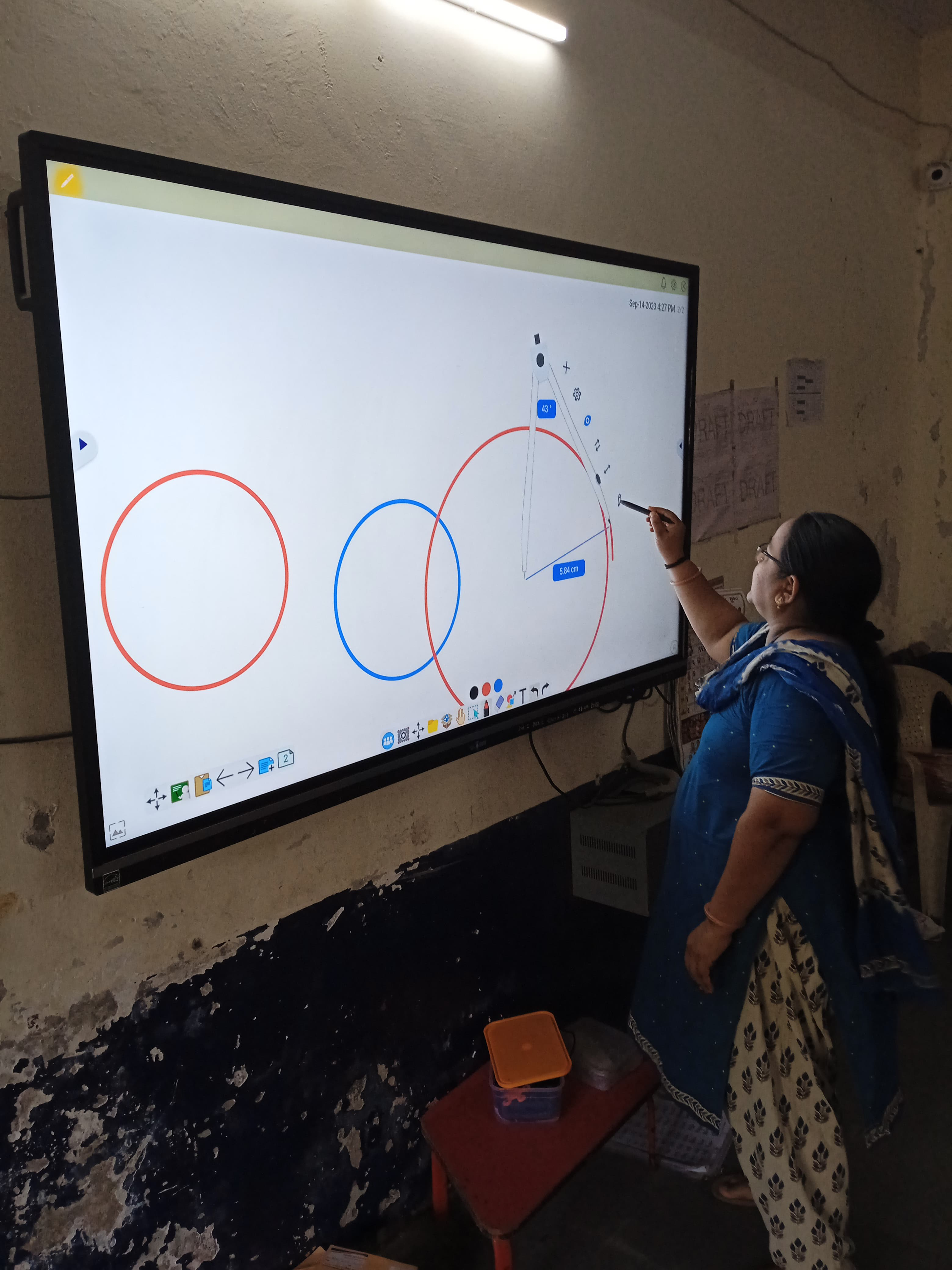- Description
-
Details
The landscape of education has witnessed a remarkable transformation in recent years, driven by the integration of technology into the learning process. Smart classrooms have emerged as one of the most significant innovations in education, redefining the way teachers teach and students learn. In this article, we will delve into the myriad benefits and innovations of smart classrooms, showcasing their potential to revolutionize education.
The Evolution of Education
Education has always been a dynamic field, adapting to societal changes, technological advancements, and the evolving needs of students. Traditional classrooms, characterized by blackboards, textbooks, and lectures, have served as the primary mode of instruction for centuries. However, the digital age has ushered in a new era of learning, demanding a shift from traditional to tech-infused classrooms.
The Concept of Smart Classrooms
Smart classrooms represent the amalgamation of technology and education, where the primary objective is to enhance the learning experience through innovative tools and resources. These classrooms are equipped with a host of technological solutions, including interactive whiteboards, digital projectors, audio systems, and specialized software applications.
Key Innovations in Smart Classrooms
Smart classrooms are distinguished by several key innovations that set them apart from their traditional counterparts:
-
Interactive Whiteboards: At the core of smart classrooms are interactive whiteboards. These large touch-sensitive displays serve as digital canvases where educators can project educational content, annotate lessons, and engage students interactively. Students can also actively participate, making learning a collaborative experience.
-
High-Resolution Digital Projectors: Smart classrooms are equipped with high-resolution digital projectors that ensure crisp and vibrant visual content delivery. These projectors enhance the visibility of materials, making it easier for students to comprehend complex topics.
-
Collaborative Learning Tools: Smart classrooms prioritize collaborative learning. Students can work together on projects, share their work on the interactive whiteboard, and participate in group discussions. These tools foster teamwork, critical thinking, and problem-solving skills.
-
Interactive Software: User-friendly software applications are a cornerstone of smart classrooms. Educators can use these applications to create and customize engaging content. This enables the design of interactive lessons, quizzes, and multimedia-rich presentations.
-
Audio Systems: Effective audio systems are integrated into smart classrooms to ensure that every student can hear the instructor clearly, regardless of the classroom's size. Clear audio is essential for understanding and engagement.
-
Internet Connectivity: In an era where information is readily available online, reliable internet connectivity is crucial for accessing digital resources, conducting research, and enabling remote learning opportunities.
-
Remote Learning Integration: Smart classrooms seamlessly integrate with remote learning tools, allowing educators to extend their reach beyond the physical classroom. This flexibility accommodates diverse learning needs and situations.
-
Security and Control: Security is paramount in smart classrooms. Robust security measures ensure that the technology used is secure, and educators have full control over content and access permissions.
Benefits of Smart Classrooms
The integration of these innovations into smart classrooms yields numerous benefits for both educators and students:
-
Enhanced Engagement: Smart classrooms facilitate active participation and engagement. Interactive whiteboards and collaborative tools make lessons more immersive and enjoyable, leading to higher student motivation.
-
Improved Learning Outcomes: Visual aids, high-resolution projectors, and multimedia content enhance students' comprehension and retention of subjects, resulting in improved academic performance.
-
Personalized Learning: Smart classrooms empower educators to tailor lessons to individual student preferences and learning styles. This personalized approach ensures that each student's unique needs are addressed.
-
Access to Resources: Smart classrooms provide easy access to a vast array of online resources, research materials, and educational websites. This enriches the learning experience and encourages independent exploration.
-
Global Connectivity: Through remote learning integration, smart classrooms break down geographical barriers. Students and educators can connect with peers and experts from around the world, promoting cross-cultural understanding and collaboration.
-
Instant Feedback: Interactive software includes assessment tools that offer immediate feedback to both students and teachers. Timely feedback helps students identify areas for improvement, allowing educators to adjust their teaching strategies accordingly.
-
Eco-Friendly: Smart classrooms contribute to sustainability efforts by reducing the need for physical resources like paper. This eco-friendly approach aligns with the growing awareness of environmental issues.
-
Cost-Efficiency: While there is an initial investment in setting up smart classrooms, they can be cost-effective in the long run. Reduced printing and distribution costs, as well as enhanced resource sharing, can lead to savings over time.
Real-World Success Stories
The benefits of smart classrooms are not confined to theory; they have been substantiated by numerous educational institutions that have embraced this transformative technology:
-
Improved Academic Performance: Schools, colleges, and universities that have adopted smart classrooms report higher student performance and academic achievement. Active student engagement directly correlates with better understanding and retention of subjects.
-
Enhanced Teacher Productivity: Educators appreciate the tools provided by smart classrooms, which make lesson planning more efficient and teaching more effective. This, in turn, frees up time for educators to focus on individual student needs.
-
Global Reach: Smart classrooms have facilitated international collaborations and partnerships. Students can participate in joint projects and discussions with peers from different countries, broadening their horizons.
-
Inclusive Education: Smart classrooms are designed to be inclusive, accommodating various learning styles and abilities. This ensures that education is accessible to all students, including those with disabilities.
-
Student Engagement: The interactive nature of smart classrooms keeps students engaged and actively participating in lessons. This not only leads to better academic outcomes but also creates a positive learning environment.
Challenges and Future Directions
Despite their immense potential, smart classrooms do present challenges, including the initial cost of implementation, the need for teacher training, and ensuring equitable access to technology. However, these challenges can be addressed and are outweighed by the long-term advantages.
Looking to the future, smart classrooms are poised for further innovation. Emerging technologies like augmented reality (AR) and virtual reality (VR) are expected to create even more immersive learning experiences. Additionally, data analytics will play a pivotal role in tailoring instruction to individual student needs, further enhancing the potential of smart classrooms.
Conclusion
Smart classrooms represent a paradigm shift in education, offering the potential to transform traditional learning environments into dynamic and interactive spaces. The benefits are wide-ranging, from enhanced student engagement and improved academic performance to global connectivity and environmental sustainability.
Institutions that embrace smart classrooms are not just investing in technology; they are investing in the future of education. As technology continues to advance, the possibilities for enhancing learning experiences are boundless. The innovations and benefits of smart classrooms are not merely theoretical; they are a reality that is already reshaping education for the better. The journey towards next-generation learning has begun, and smart classrooms are leading the way.
Smart Classroom Images






-
- Reviews
-
Default welcome msg!

